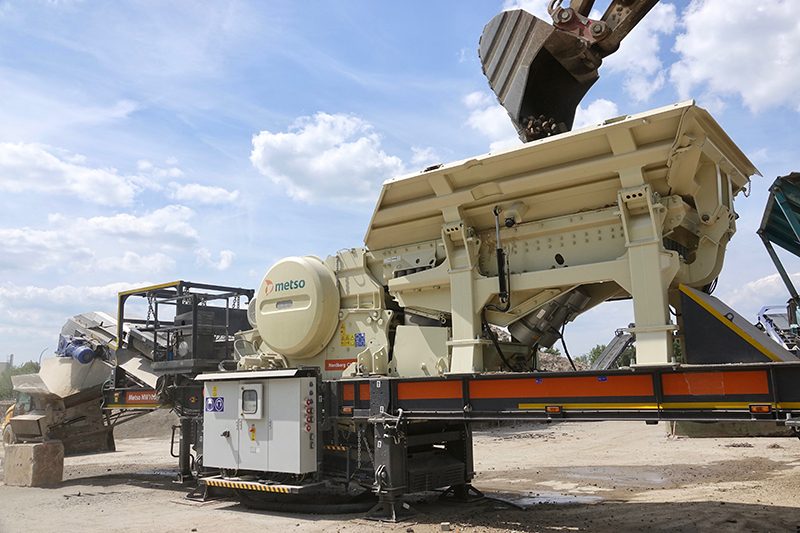When it comes to treatment of mineral building waste, 75% of the company's crushing and screening plants are powered by electricity. In addition to reducing emissions, there are also practical reasons for it. "Without harmful diesel emissions and noise, our staff can concentrate on the actual work. Annoying refueling and set-up times are gone, "says Managing Director Joachim Schnock.
HBR's customers come mainly from the municipal and commercial sectors and include especially demolition companies and road builders.HBR produces recycling material in 0/4, 0/8 and 0/45 size grades and the product range is constantly being expanded to include niche products. Among other things, the popular 0/22 intermediate size, which is suitable as a leveling material for 0/45 ballast, is in demand.
"With the Nordberg® CT80 crusher, which we acquired from Fischer-Jung in Krefeld at the time, we started our own operations in 1998. We have been following the technical development at Metso ever since." HBR has taken all precautions to reduce the noise and dust level in the recycling yard by equipping most screening plants with dust covering fabrics.
The Hückelhovener recycling plant just recently acquired and commissioned the new Nordwheeler, a semi-mobile processing plant with a C106™ jaw crusher from Metso, from Fischer-Jung Aufbereitungstechnik in Krefeld.


